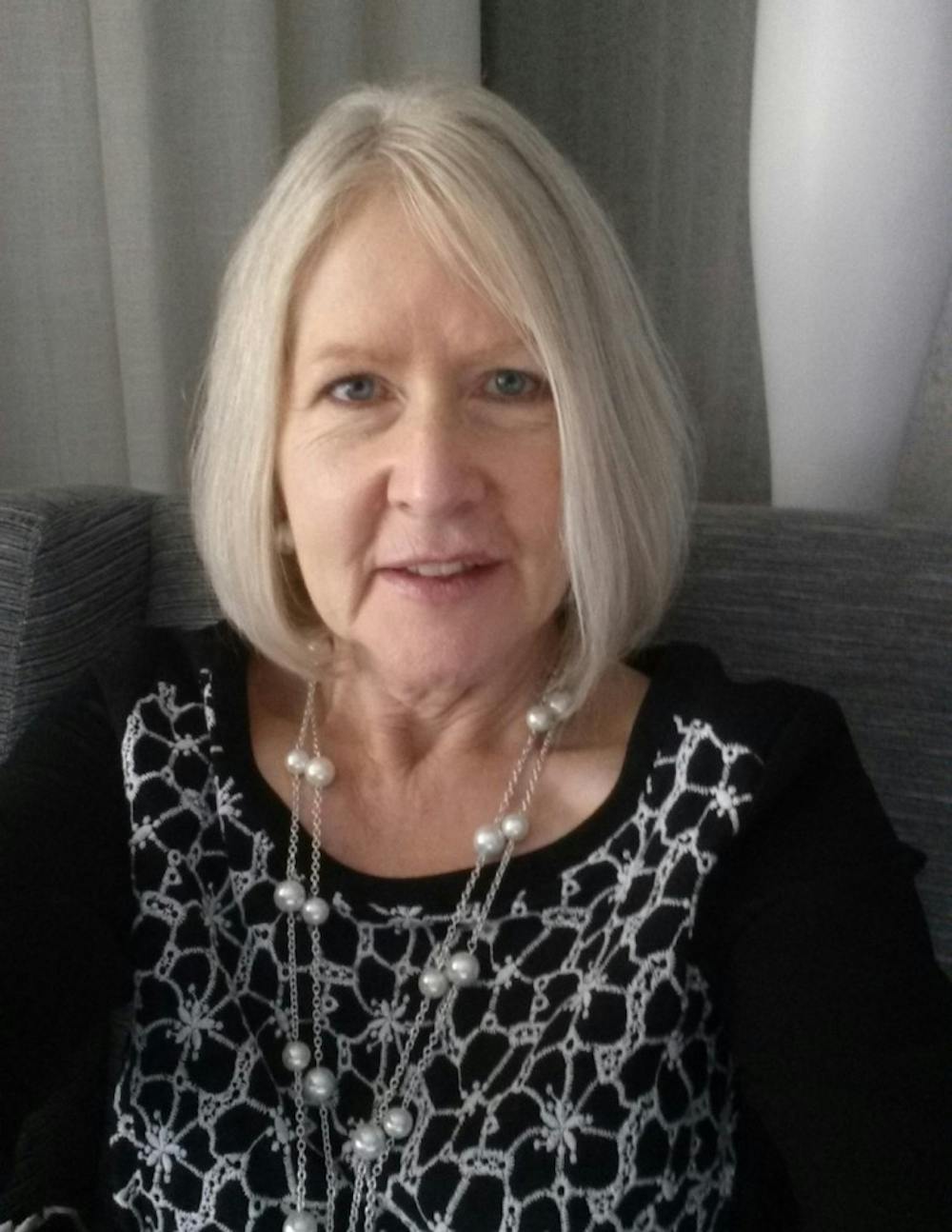Leona Woelk is an associate scientist at the UNM Prevention Research Center. She works under Theresa Cruz, principal investigator for a sexual violence prevention project. They work with the New Mexico Department of Health, the New Mexico Coalition of Sexual Assault Programs and rape crisis centers and other organizations across the state that are receiving funding from NMDOH to work on sexual violence prevention.
The researchers provide training and technical assistance to the organizations to implement and expand primary prevention efforts, meaning efforts to prevent sexual violence from happening in the first place.
In June 2015, the UNM Prevention Research Center completed a year-long, statewide strategic planning process for primary prevention of sexual violence for NMDOH. The scientists worked with many different organizations and communities throughout New Mexico to complete the plan, including conducting 11 focus groups across the state to learn more about sexual violence and prevention efforts in the local setting.
One of those focus groups was conducted at UNM with male students and other young men from the Albuquerque community to learn more about how to engage men in sexual violence prevention work.
The Daily Lobo talked to Woelk about sexual violence prevention efforts in the state.
Tell us about the current state of sexual violence in New Mexico?
“The state of sexual violence in New Mexico, consistent with the situation in other states in the U.S. and most places throughout the world, is dire. According to the Survey of Violence Victimization in New Mexico conducted in 2005 and summarized in “Sex Crimes in New Mexico XII: An analysis of 2013 data from the New Mexico Interpersonal Violence Data Central Repository,” about one in four females and one in 20 males in NM experience an attempted or completed rape sometime during their lifetime.
“The SVV also shows that only 6 percent of males and 19 percent of females report their rapes to law enforcement. Those numbers don’t include other types of sexual violence commonly experienced by many in the state, such as unwanted touching, sexual harassment, stalking, forced prostitution or human trafficking for sexual purposes. What is particularly devastating is that in most cases, the offender is known to the victim and in almost a third of the cases (32 percent) the sexual assault was perpetrated by a family member.
Which demographic community is most affected by the violence?
“Unfortunately, many communities in New Mexico are vulnerable. Over half (53 percent) of sexual assaults are experienced by people under 18 years old, so our children and youth are experiencing much of the sexual violence. New Mexico also has relatively large populations in which sexual violence occurs at a disproportionately high rate: immigrants, Native Americans, rural residents and LGBTQ people.
“Moreover, although sexual violence is underreported in all populations, it is especially likely to remain unreported in these groups because of fear of or unfamiliarity with law enforcement or the legal system, fear of retaliation, poverty that makes it difficult to avoid unsafe environments and access resources and social norms of secrecy and privacy.”
How do you think sexual violence can be prevented in New Mexico?
Get content from The Daily Lobo delivered to your inbox
“Sexual violence is a complex problem. There is no quick fix or single solution. Across the world research continues to help us better understand what works for different populations and cultures. We do know that for prevention to work, strategies have to be comprehensive. For instance, we need programming that trains individuals about the power imbalances in our society that promote sexual and other types of violence, what healthy relationships consist of, what consent means, how to be an active bystander to safely interrupt potentially violent situations, critical thinking skills and media literacy, etc., so that people understand that sexual violence doesn’t ‘just happen,’ that it exists within a larger context and it can be prevented. This includes education and skill building in schools, campuses and other settings, as well as training with parents, teachers, medical providers, faith leaders, coaches, community leaders, etc.
“Another level of comprehensive prevention is community-wide education through efforts such as local or social media campaigns. This level of work is vital to build the critical mass of support needed to reduce the general tolerance of violence, including sexual violence, within our society. We have to work together to change some behaviors that have been accepted as ‘normal’ in society. For example, on campuses around the country there has been a lot of recent work focused on active consent, and the idea that an individual that is incapacitated by alcohol or drugs cannot consent to sexual activity.
“Additionally, we need to focus on organizational practices and policy-level interventions. Many people are familiar with some policy-level interventions, like sexual harassment policies and the recent California “Yes Means Yes” law providing a clear definition that consent to sexual activity needs to be affirmative, on-going and can be revoked at any time. What people may not realize is that organizations ensuring equal pay and equitable family leave, or cities passing policies that regulate the density of alcohol outlets can also impact sexual violence.”
How does your project serve the community?
“Our focus is two-fold. We support local providers, such as rape crisis centers, through training and technical assistance, and we assist with building state-level infrastructure to help sustain and expand primary prevention of sexual violence work across the state. The PRC brings an injury prevention background and research capabilities to the mix, which are areas of expertise that further support the prevention efforts of the partners we work with.”
Which communities are you targeting specifically?
“In the past, prevention focused on how to help potential victims change their behavior so they are less vulnerable to sexual assault. While we don’t want to stop looking at risk factors for victimization, we need to direct more research and prevention efforts toward reducing risk factors for perpetration. Again, this is a very complicated topic because it requires looking at both preventing violent behavior by individuals and addressing family, institutional, societal and cultural factors that foster, and in some cases condone, violence towards people with less power or those that don’t conform to traditional gender or societal roles.
“There is also a growing emphasis on engaging males in sexual violence prevention. Male involvement strategies include having men work in partnership with women to prevent sexual violence by challenging restrictive norms around what constitutes masculinity, emphasizing nonviolence as a male strength and promoting personal responsibility in challenging sexist and homophobic behavior. There is a growing body of research around recruiting and training athletic coaches to act as mentors and role models for young men and boys that is showing promise in changing the cultural norms that support sexual violence.”
Any data you would like to share with our readers to understand sexual violence prevention efforts in the state?
“It’s really hard to quantify prevention efforts across the state. We know about the efforts within the organizations we partner with, such as the Rape Crisis Center of Central New Mexico in Albuquerque, providing rape prevention education to UNM students and staff. But we also know that there are many other organizations doing work that impacts sexual violence that we don’t work with directly. For instance, nurse home visiting programs, like the one at UNM, that work with pregnant women and parents of newborns have been shown to reduce violence in the home.
“Domestic violence shelters often address sexual violence within their services. Positive youth development programs have been shown to increase protective factors for sexual violence by increasing youth connections to family, school and community. Programs that work with immigrant and border populations often include prevention of sexual violence in their scopes of work. These are just a few examples, but all of them and many more are necessary if we are going to truly make this world safer for women, children and other populations vulnerable to sexual violence.”
Any other information you would like to share with our readers?
“The costs of sexual violence are so high. Not just in terms of the assault in the moment, but the lasting ripple effects of physical, mental and emotional health, the loss of trust, the self-blame, lost work productivity, the effects it has on family members and loved ones, friends and the community. I think one of our strategic planning focus group participants captured it best when she said, ‘I think [sexual violence] prevents people from achieving what they can achieve throughout their lifetime.’ In New Mexico, I think it’s preventing us as a whole from being our best and achieving prosperity.”
Sayyed Shah is the assistant news editor at the Daily Lobo. He can be contacted at assistant-news@dailylobo.com or on Twitter @mianfawadshah.






